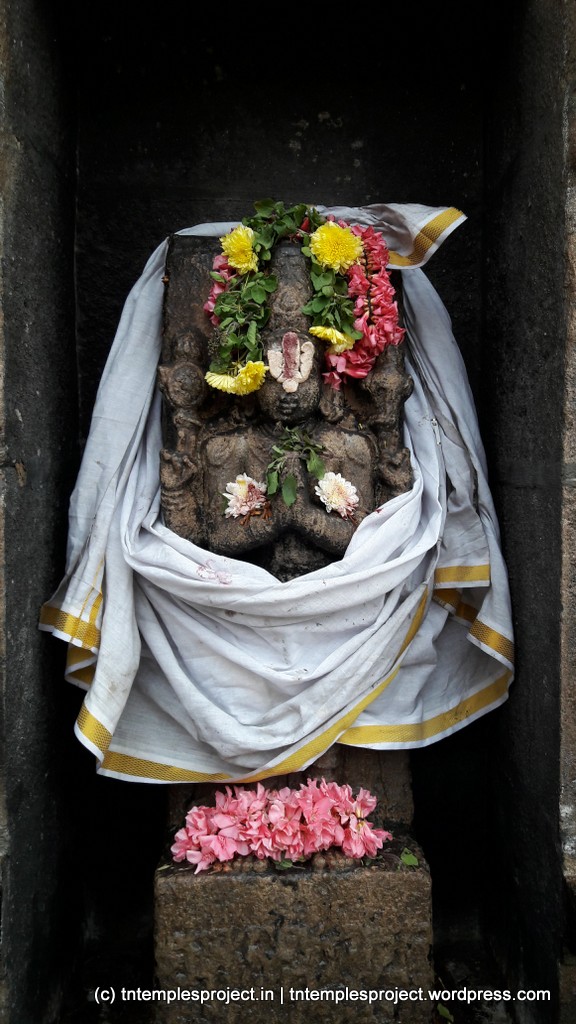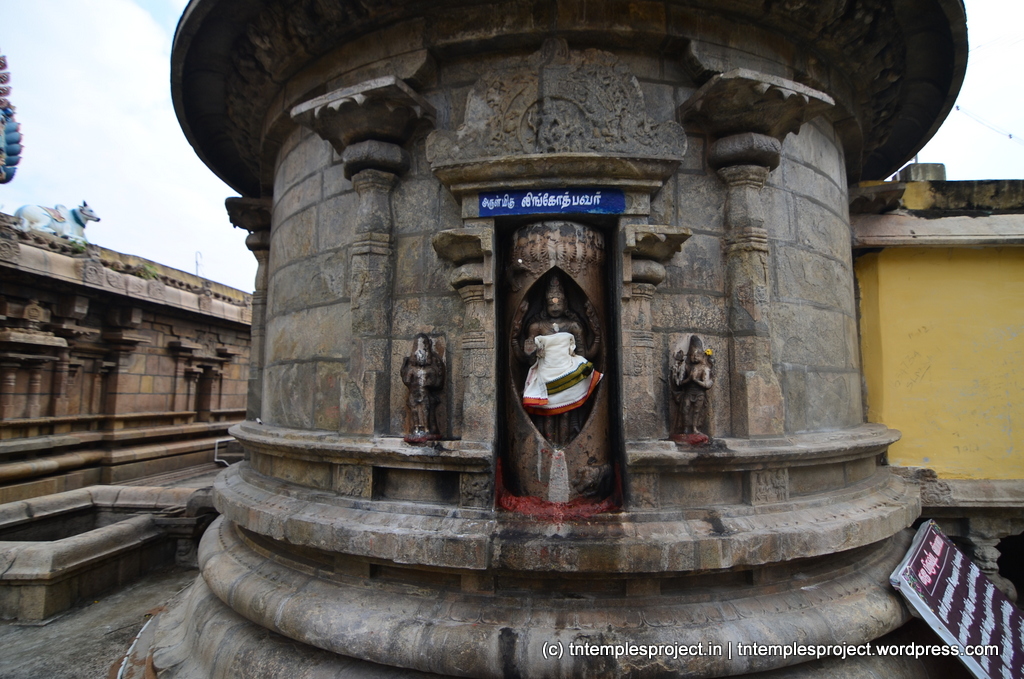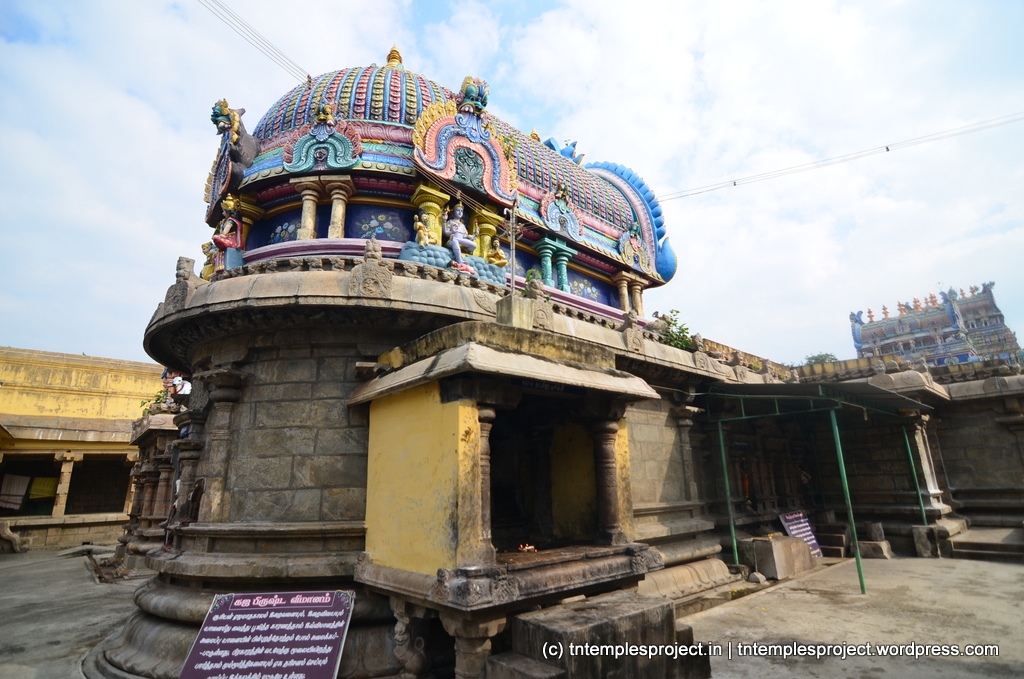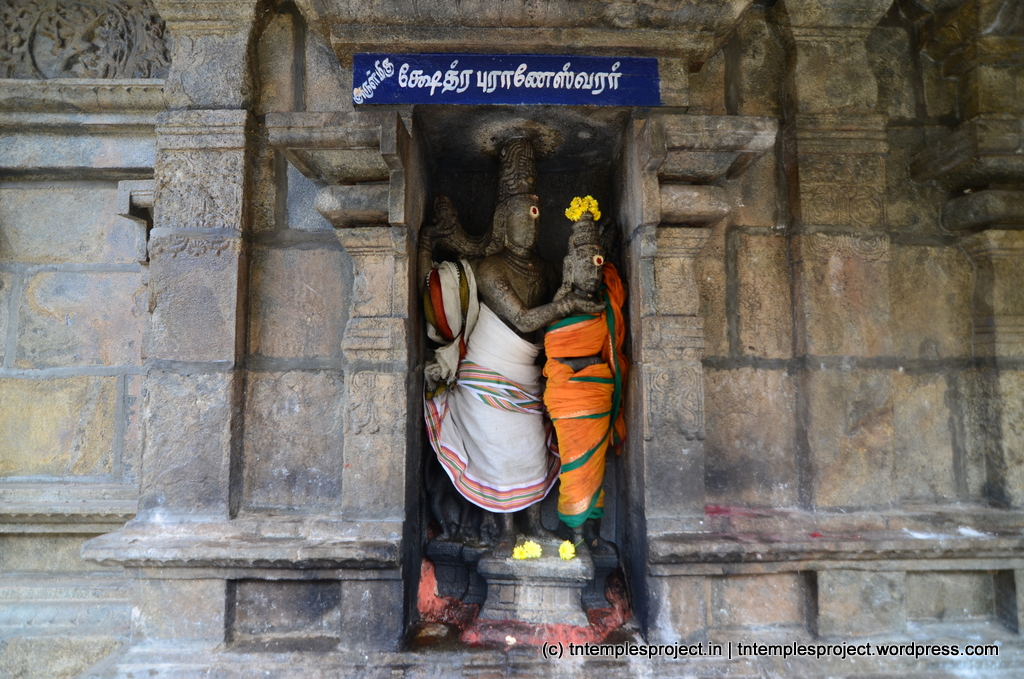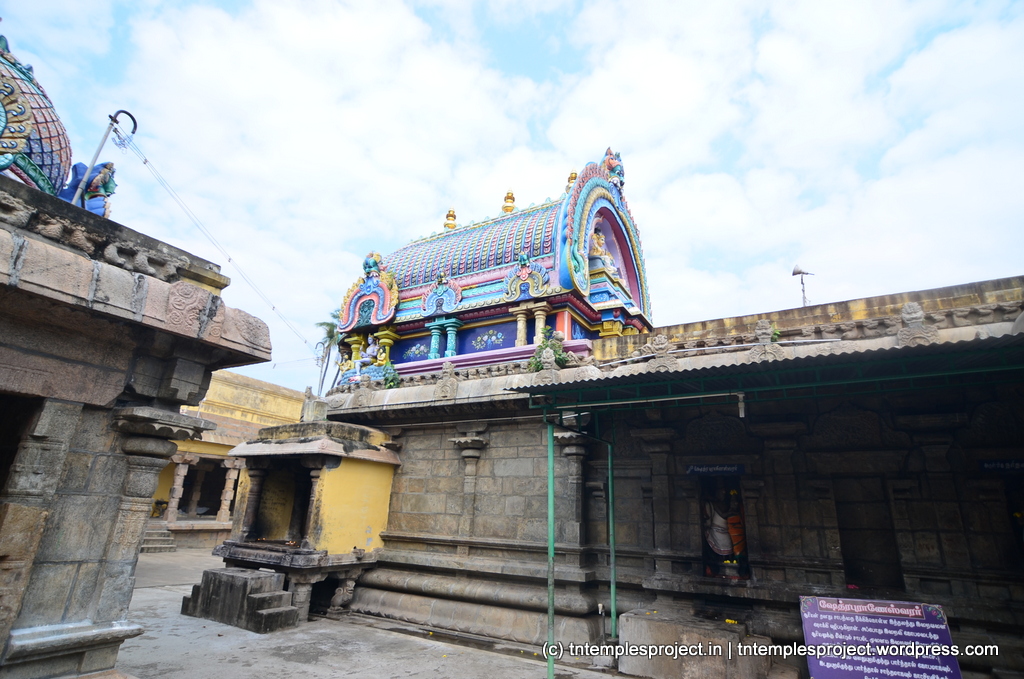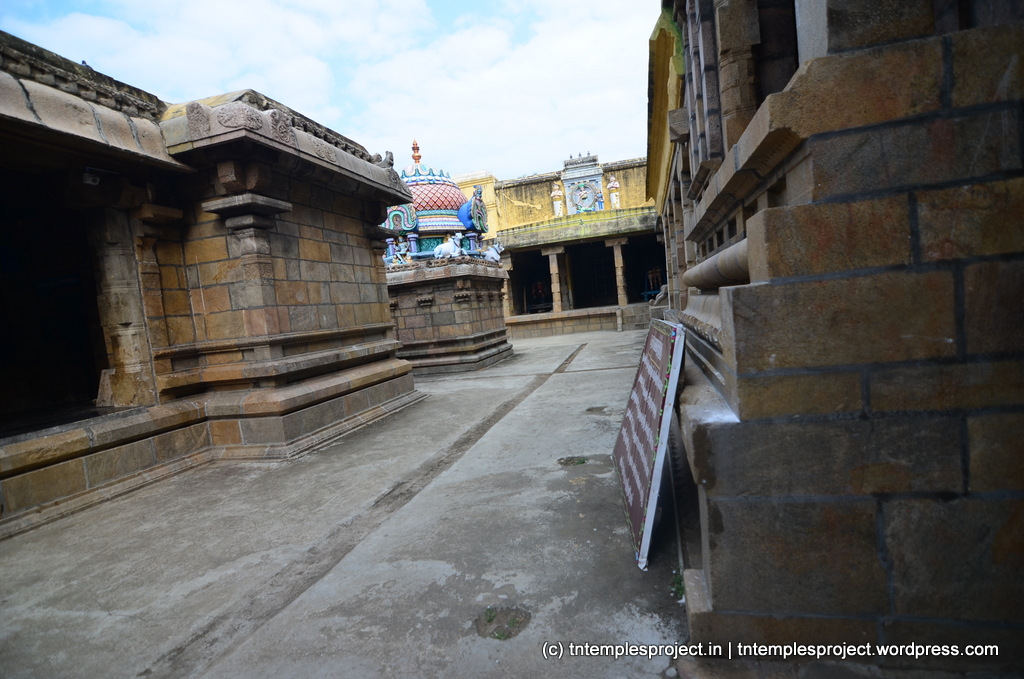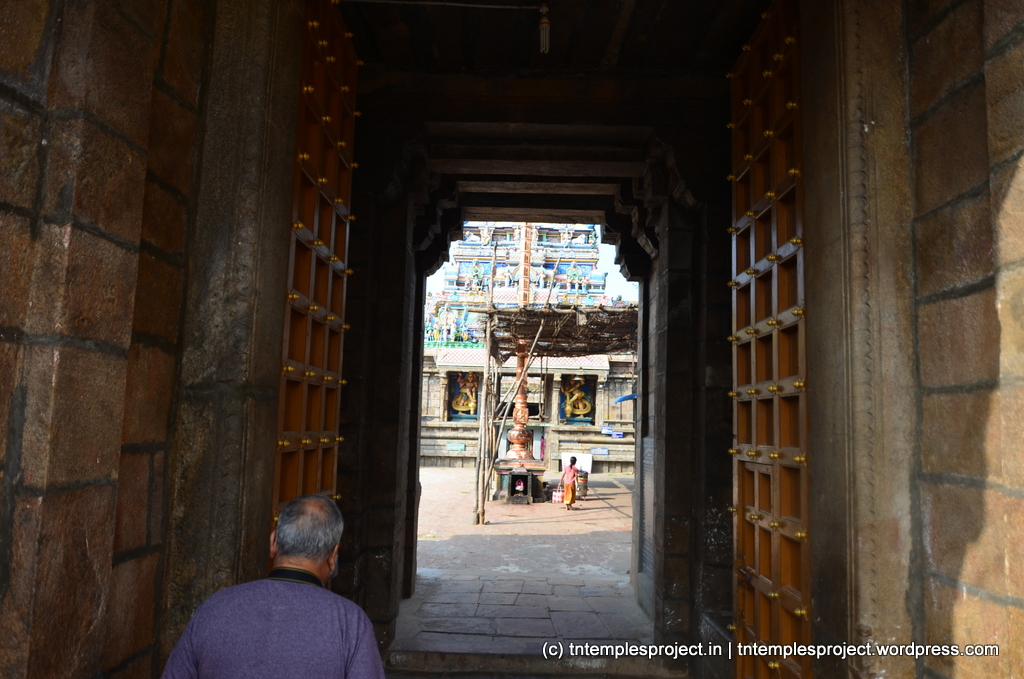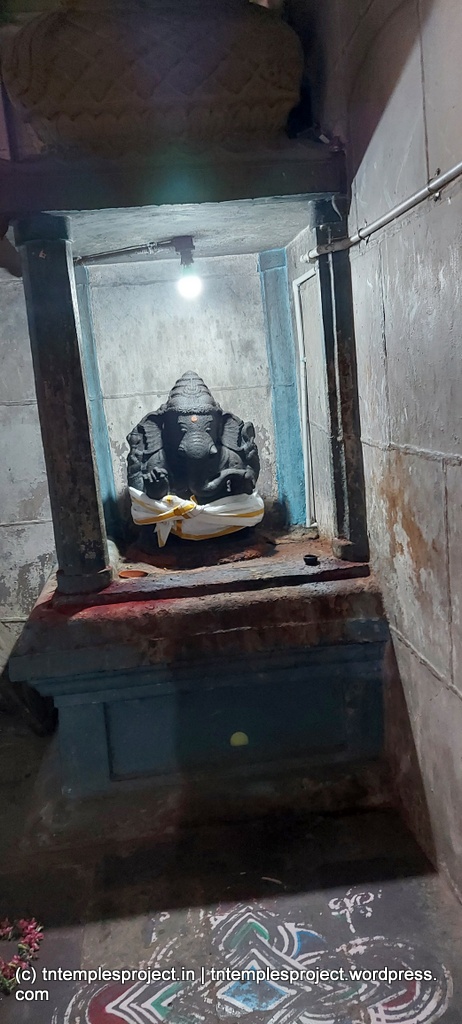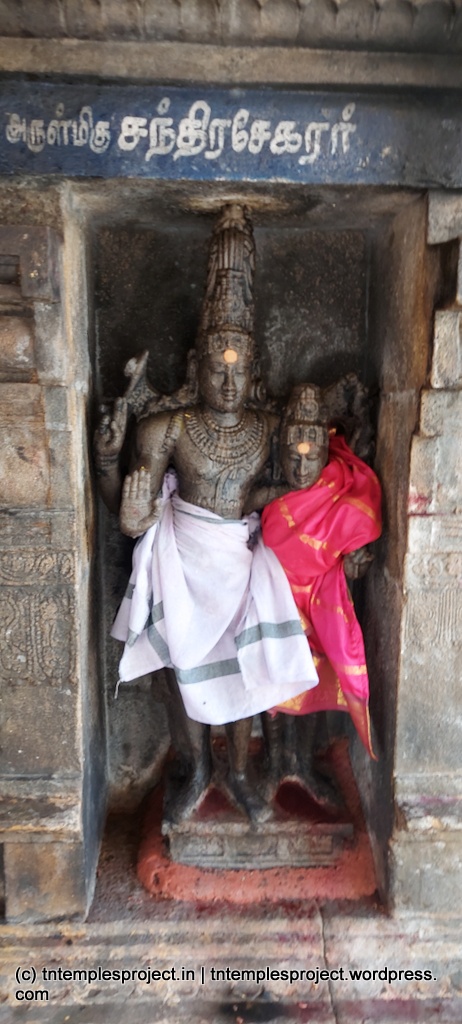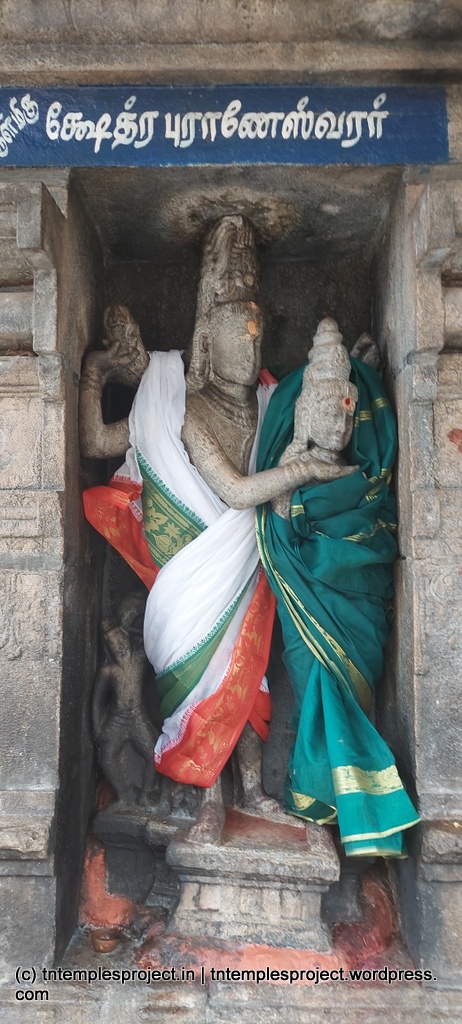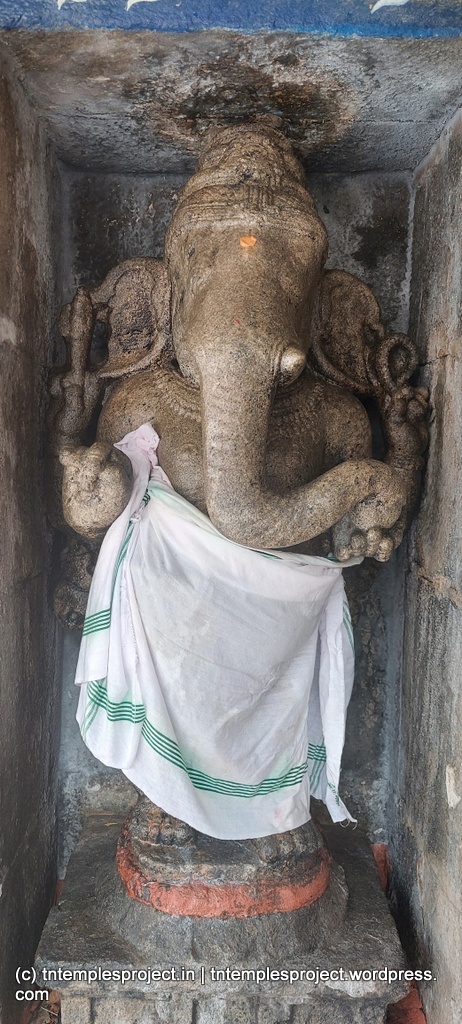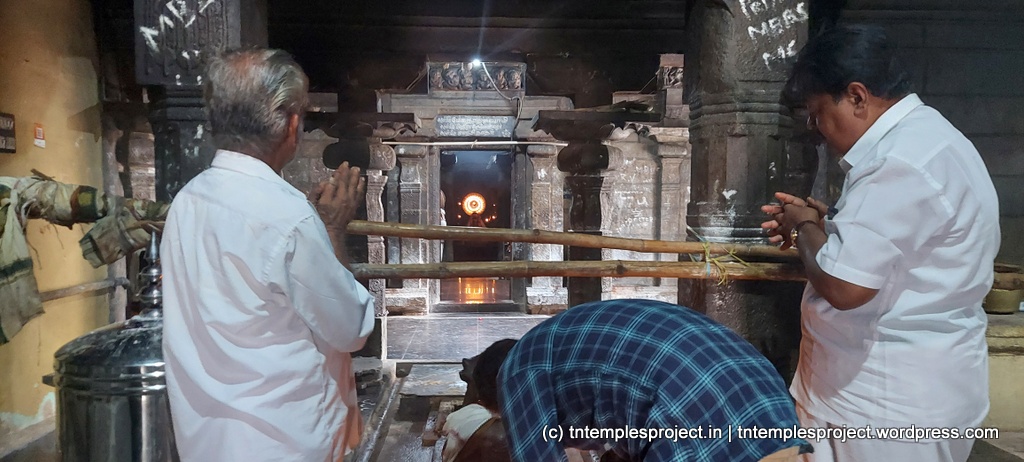Basic information about the temple
| Moolavar: | Meghanathar | Ambal / Thayar: | Soundranayaki, LalitambaaL |
| Deity: | Siva | Historical name: | Tirumeeyachchur |
| Vriksham: | Vilvam | Teertham: | Surya Teertham |
| Agamam: | Age (years): | Timing: | 6 to 12 & 4.30 to 8.30 | Parikaram: |
| Temple group: | Paadal Petra Sthalam (Kaveri Then Karai) | – | |
| Sung by: | Temple set: | ||
| Navagraham: | Nakshatram: | ||
| City / town: | Tirumeyachur | District: | Tiruvarur |
| Maps from (click): | Current location | Mayiladuthurai (18 km) | Tiruvarur (26 km) |
| Kumbakonam (35 km) | Nagapattinam (39 km) |
Location
Sthala puranam and temple information
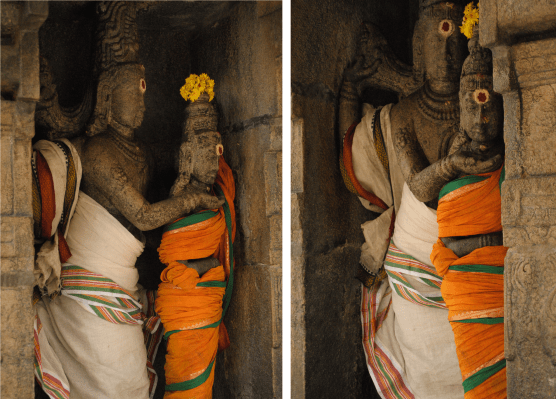
Sage Kashyapa had two wives – Kadru and Vinata – who prayed to Lord Siva for a child. Siva gave them each an egg, to ke kept safe for a year. At the end of this, Vinata’s egg broke and Garuda was born. Kadru, on the other hand, hastily broke open her egg before time, and so had a child who was not fully formed – this child was named Aruna, who later became Suryan‘s charioteer, and would therefore become dawn (coming before Suryan). Aruna was a staunch devotee of Siva and would visit Kailasam every day. However, on one occasion, Suryan mocked Aruna for his deformity, preventing him from going to Kailasam. Aruna took the form of Mohini – a woman – to escape further harassment, and worshipped Siva. On his return, Indra saw and was enamoured of Mohini, and had a child with her – Vali, from the Mahabharatam. Later, Suryan asked Aruna about his visit, and when he learnt about the feminine form, he desired to see it. When Aruna showed it to him, Suryan too became enamoured, and also had a child her – Sugreeva.
Due to misbehaving with Aruna/Mohini, Siva cursed Indra (who lost his throne to Mahabali, as a consequence), and Suryan lost his lustre due to which the universe became dark. Suryan pleaded with the Lord for forgiveness, and was told to go to Tirumeyachur and perform penance, which he did. As part of this, he crafted murtis of Siva and Parvati, placed them on the back of an elephant and celebrated them by flying them to the clouds. For this reason, Siva here is called Meghanathar (Lord of the clouds).
But despite this, Suryan’s effulgence did not return, so he went back to Siva, this time crying out for pity. His cries disturbed Parvati, who was performing tapas, and She was about to curse Suryan to become dark for another seven months. But Siva intervened and pacified Parvati, after which She relented. This last part – Siva pacifying Parvati – is beautifully sculpted in stone in the prakaram, as Kshetra Puraneswarar, and Parvati here is called Shanta Nayaki.

When Siva was attempting to pacify Parvati, the ashta vachinees (eight personifications of speech) started praising Parvati by reciting her 1000 names, after which Parvati was pacified. This is the origin of the Lalita Sahasranamam.
According to another puranam, Pandasuran, a demon, was terrorising the devas and sages, who prayed to Parvati to help them. Parasakti emerged the sacrificial fire and killed the demon, but continued to remain in a state of aggression. Siva was asked to calm her down, and He asked Parvati to come down to earth as Manonmani and undertake penance for achieving this goal. The ashta vachinees of the Goddess sang Her praises in the form of Her 1000 names, which became the Lalita Sahasranamam.
It is said that Hayagreevar learnt this stotram from the Goddess Herself, and taught it to Sage Agastyar, who visited this place with his wife Lopamudra, and sang the Sahasranamam at this temple. Lalitambigai appeared to him as navaratna (nine precious gems) after which Agastyar sang the Lalita Navaratnamalai in praise of Her, and also the Rahasyanamasahasram.

Yama worshipped here and offered pirandai (veld grape) in order to pray for his own longevity! Tirumeyachur is also considered to be the birthplace of Saneeswaran. Maybe because of the puranam of this temple, Aruna, Garuda, Vali and Sugreeva are also considered as having been born here.
The temple houses a separate shrine for Siva as Sakalabhuvaneswarar, which is a separate Paadal Petra Sthalam (referred to in the Tevaram Tirumeyachur Ilamkovil) at which Appar has sung a pathigam.
The Neideepam display at this temple’s festival is special. At that event, while Lalitambigai Amman is being decked up for worship, a structure measuring about 15 feet in length, 4 feet in breadth, and a height of about 1.5 feet is created outside the shrine, using plantain leaves and stems, coconut husks and other natural products. These are laid out on plantain leaves, on which sweet Pongal (sakkarai Pongal), tamarind rice, curd rice, etc. is spread out. In the middle of the sakkarai Pongal, an indentation is created and filled with pure ghee. When the curtain to the deity is drawn, Amman’s reflection is seen in the pool of ghee. It is believed that there is no rebirth for those who witness the reflection of Amman in the pool of ghee.
This shrine is considered to be the first (aadi) of the Sakti Peethams and the Goddess is therefore considered Aadi Parasakti.
This is one of the maadakoil temples built by Kochchenga Cholan, and was later renovated and additions were made, by Rajendra Chola and Sembian Madevi. The inscriptions in the temple also refer to the Cholas, as well as the Pandyas. The vimanam over the garbhagriham here is called the gaja-prishtha vimanam (shaped like the back of an elephant), possibly representing the puranam where Suryan took the murtis of Siva and Parvati on an elephant (see above).
The temple is full of spectacular iconographic and architecture – mostly from the Chola period – each with its own meaning and beliefs. Amman is in sukhasana, seated with Her right leg folded, and underneath is a Sri Chakram. Durga here is depicted with eight arms (Ashtabhuja Durga), holding a parrot which is said to convey devotees’ prayers to Lalitambigai. On the koshtam wall behind the garbhagriham, is Siva as Lingodhbhavar, but also depicting Vishnu and Brahma worshipping Siva.
Other information for your visit
Contact
Phone: 94448 36526, 94446 98841, 04366 239170
Gallery




